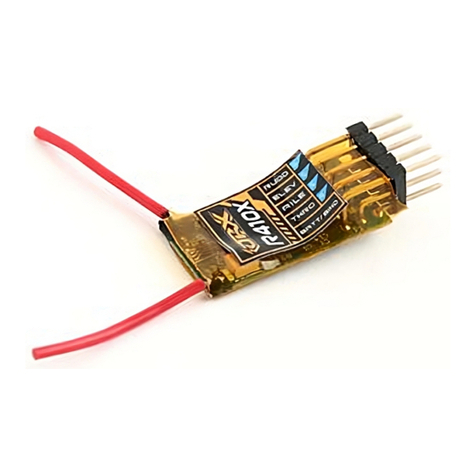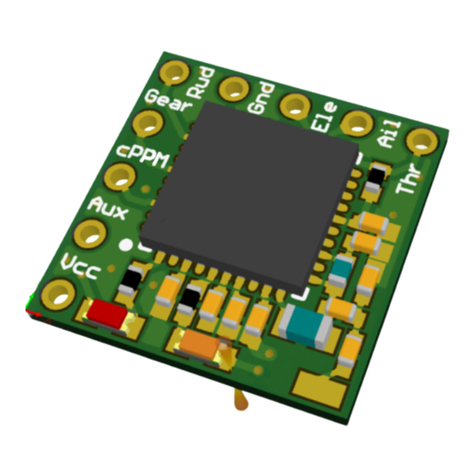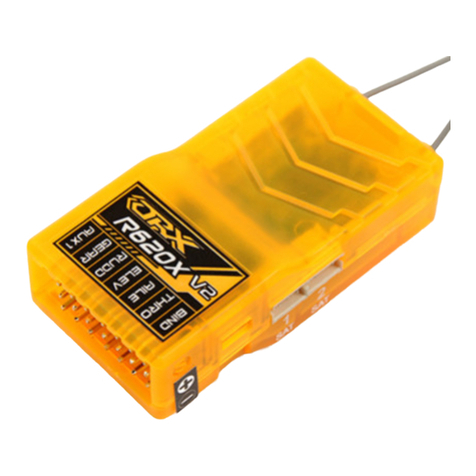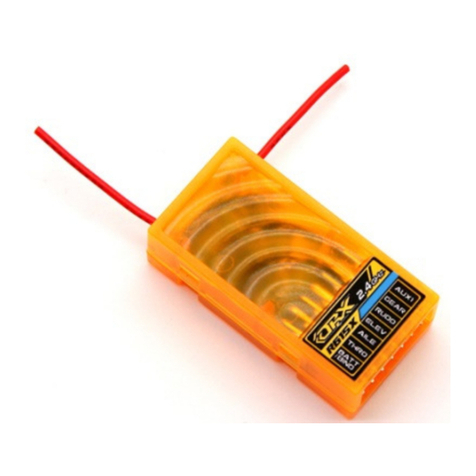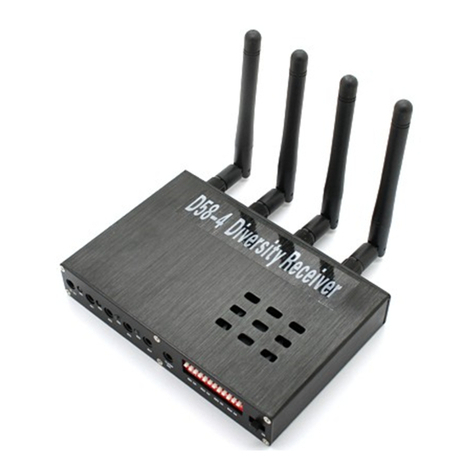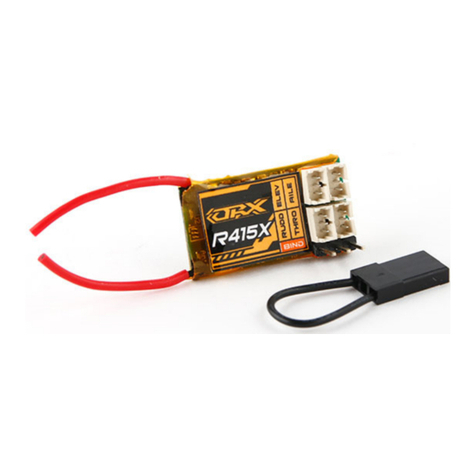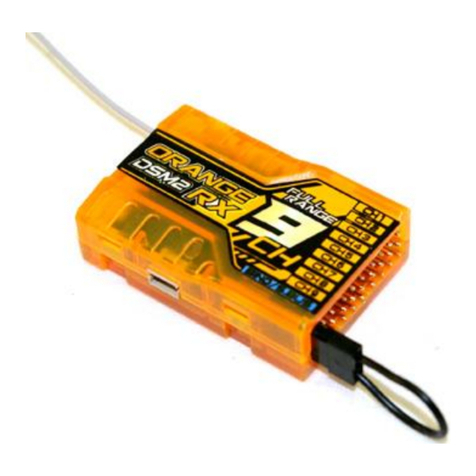
Page 3 of 9
The receiver will work with any DSMx/DSM2 compatible transmitter or Tx module.
There is two ways to initiate binding procedure:
1. Manual binding by power ON with pins 2 and 3 on UART connector shortened;
2. Autobind - after 30 seconds of no known signal from transmitter received the device will initiate binding procedure. If the receiver didn’t see
any transmitter in binding mode nearby for 30 seconds, the receiver will turn binding mode off for safety reasons.
The receiver indicates binding mode by rapid blinking of blue LED (3-4Hz). Follow the instructions of your transmitter to initiate its binding.
During binding blue LED will change the pattern of binding and if the binding was successful blue LED will become solid ON.
MOUNTING STABILIZER IN THE PLANE:
Mount stabilizer in the plane on flat solid surface parallel to the wings and in line with fuselage, antennas facing front. Place stabilizer close to
the center of gravity of the plane. It will make the stabilizer work better. Use double sided foam supplied with stabilizer or similar. Try to
minimize vibrations of the plane(propeller better to be balanced) because vibrations will affect the stabilizer performance.
STABILIZER:
• 4 channels PWM output to servos
• 3 mode of stabilizer
- Acro Pro mode - rates, no autolevel
- Advanced mode - autolevel mode with acro capability
- Beginner mode – “SAFE” mode, envelope. User can limit the maximum angle of pitch and roll.
• Bypass mode – for experienced pilots and aircraft tuning – no stabilization, direct control of aircraft
• 3 aircraft schemes
- T-Tail (Classical)
- V-Tail -
- Delta (Flying wing)
The stabilizer can be connected to the PC using USB-UART adapter (sold separately)
Settings for UART are 115200, N, 1.
A PC software can be downloaded from “Files” section from the Hobbyking Web site.
Using PC software is similar to most of the flight control PC apps and self-explanatory.
Using PC software you can:
• Tune PID-s for different aircrafts with typical tuning presets and mixes for T-tail, V-Tail, Delta;
• By various servo assignment and mixes set up the aircraft with virtually any servo position and orientation;
• Set various aspects of the stabilizer behavior, assign channels for flight modes and much more.
• Save and restore set ups to keep different configurations for different aircrafts
SETTINGS VIA GUI :
Please note: GUI outlook is for reference only. It will be changed in commercial release.
FIRMWARE UPGRADES:
• Firmware upgrades are done via UART interface and GUI. Pre
